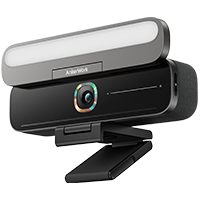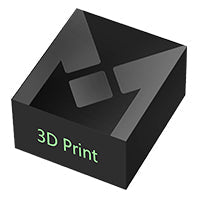Determining which electronic items are acceptable to carry aboard an aircraft can be perplexing. If you are still wondering if can you bring a portable charger on a plane, the response is affirmative for most power banks–provided that they meet the stipulated safety criteria. Should you worry about your charger being confiscated or have general concerns regarding the safety aspects of air travel, the ensuing information should provide clarity.

CAA Regulations for Portable Chargers
When travelling by air in the UK, passengers must adhere to strict rules regarding portable chargers and lithium-ion batteries. Under Civil Aviation Authority (CAA) guidelines, spare lithium-ion batteries, including power banks, must be carried in hand luggage and are prohibited in checked baggage due to fire safety risks.
Portable chargers must not exceed 100 watt-hours (Wh) per battery. With prior airline approval, passengers may carry up to two larger batteries (101-160 Wh). Quantity limits also apply: avoid carrying excessive spare batteries unless essential for your journey.
During critical phases of flight—takeoff, landing, taxiing, and turbulence—portable chargers must be switched off and stowed securely to prevent movement or accidental activation. Airlines may enforce additional restrictions, so always verify your carrier’s policies beforehand.
Can You Take a Power Bank on an International Flight?
Travel beyond domestic routes does not preclude the use of portable chargers. Power banks remain admissible on international flights; however, the applicable regulations may vary depending on the airline, destination country and the specific type and capacity of the charger in question.
IATA Regulations
The International Air Transport Association (IATA) has outlined that power banks with a capacity of up to 100 Wh are acceptable in hand luggage. For safety reasons, spare batteries must never be placed in checked baggage. Should your power bank exceed the 100 Wh threshold but remain within the 101-160 Wh bracket, you are allowed to bring up to two additional spare batteries in hand luggage; however, these must be individually safeguarded against short circuits and may require prior airline authorisation.
It is also important to note that batteries exceeding 160 Wh are disallowed in both hand and checked baggage and must be transported as cargo, following the IATA’s Dangerous Goods Regulations. Moreover, any portable batteries that exhibit signs of damage are categorically prohibited.

Airline-Specific Policies Regarding Power Banks
Although the International Air Transport Association (IATA) provides general guidelines, individual airlines apply their own policies on carrying power banks. For example, British Airways follows the standard limit of 100 Wh for power banks in hand luggage and permits up to two spare batteries between 101 and 160 Wh with prior approval. Virgin Atlantic enforces similar restrictions, explicitly prohibiting power banks in checked baggage. EasyJet and Ryanair also adhere to these limits, requiring passengers to carry spare lithium-ion batteries in hand luggage and ensuring they are individually protected from short circuits.
Before travelling, check your airline’s specific policies and any additional UK Civil Aviation Authority (CAA) regulations to ensure compliance.
How to Determine the Watt-Hours of a Battery?
When preparing to travel with a power bank, it is crucial to verify that the device adheres to airline regulations, which are typically expressed in watt-hours (Wh). Frequently, however, portable chargers advertise their capacity in milliamp-hours (mAh) rather than Wh. To determine compliance, a straightforward conversion from mAh to Wh is required using the following formula:
Watt-hours (Wh) = (Voltage (V) × mAh) / 1000
For instance, most power banks utilise lithium-ion batteries with a standard voltage of 3.7V. If your power bank is rated at 10,000 mAh, the calculation proceeds as follows:
Watt-hours = (10,000 mAh × 3.7 V) / 1000 = 37 Wh
Accordingly, a 10,000 mAh power bank is well within the 100 Wh limit and may be carried in your hand luggage.
Similarly, a charger rated at 20,000 mAh will equate to approximately 74 Wh, which is also compliant with current regulations. In contrast, consider a power bank with a capacity of 50,000 mAh:
Watt-hours = (50,000 mAh × 3.7 V) / 1000 = 185 Wh
In this scenario, the device exceeds the permitted capacity, meaning it cannot be brought on board either in hand or checked baggage and must instead be dispatched as cargo.
Additional Capacity Information
In the event that you are aware of your power bank’s watt-hour rating but require conversion to milliamp-hours (mAh), the following formula may be employed:
mAh = (Wh × 1000) / Voltage (V)
For example, a power bank rated at 99.9 Wh operating at 3.7V would possess a capacity of:
mAh = (99.9 Wh × 1000) / 3.7 V ≈ 27,000 mAh
This conversion facilitates a straightforward verification process, ensuring that your portable charger is in full compliance with airline requirements prior to travel.

Recommended Portable Power Chargers for Air Travel
When embarking on a flight, it is advisable to select a portable phone battery that meets airline safety standards. Below is a list of some of the highly recommended portable power chargers that are approved for use on board:
- Anker 533 Power Bank (PowerCore 10K): With a 10,000 mAh capacity, this charger is Qi-certified for wireless charging and comes equipped with both USB-C and USB-A charging ports.
- Anker 622 Magnetic Battery (MagGo): Featuring a 5,000 mAh capacity, a built-in foldable kickstand and a compact design, this model also supports wireless charging.
- Anker 733 Power Bank: A hybrid device that functions both as a wall charger and a power bank, it offers a 10,000 mAh capacity accompanied by intelligent temperature monitoring.
- Anker 313 Power Bank (PowerCore 10K): This model delivers 10,000 mAh capacity with a 12W charging output, an integrated trickle-charging mode and a MultiProtect safety system.
While selecting a portable charger, ensure that you verify the specific regulations pertaining to lithium-ion batteries as enforced by your airline, and always transport the charger in your hand luggage rather than in checked baggage.
Conclusion
Can you bring portable chargers on a plane? Now you probably know that it largely depends on CAA, IATA, and airline-specific guidelines. Checking watt-hour limits before flying avoids last-minute issues. Most airlines allow carry-on storage for lithium-ion batteries within approved capacity, while checked luggage restrictions remain strict. Choosing travel-friendly chargers ensures compliance and convenience.
FAQs
Where should I stow my mobile charger during a flight?
Your mobile charger, including any power banks, should be kept in your hand luggage. Due to safety considerations, devices with lithium-ion batteries are not permitted in checked baggage. Ensure that it is securely stored and that you follow the crew’s instructions during phases of takeoff, landing and turbulence.
Can I take a 20,000 mAh power bank on board?
Yes, a 20,000 mAh power bank is acceptable for air travel. With a typical voltage of 3.7V, it equates to roughly 74 Wh, which is safely within the 100 Wh limit. Remember that it must be carried in your hand luggage.
Can I take a portable charger on a plane UK?
Yes, you can take a portable charger (power bank) on a plane in the UK, but only in your hand luggage—it’s not allowed in checked baggage. The power bank must be under 100Wh (27,000mAh), and you’re typically limited to two per person. Larger batteries (101–160Wh) may require airline approval. Always check your airline’s rules before flying to ensure compliance with safety regulations.




















